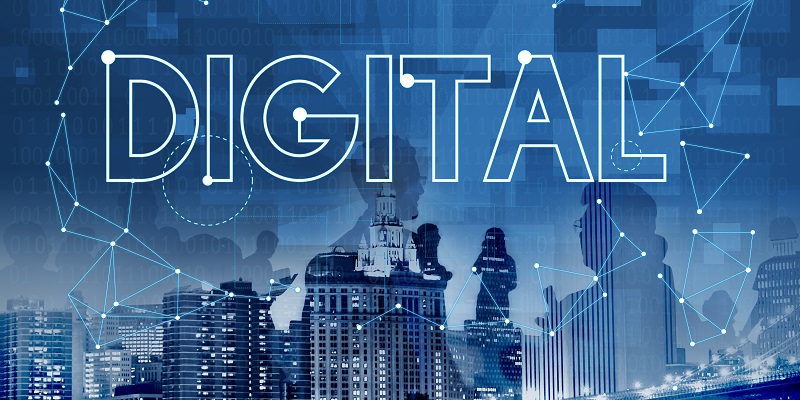The advent of global machine vision is revolutionizing the internet landscape, enhancing connectivity, and paving the way for a new era of digital transformation. This groundbreaking technology has the capability to analyse images and videos, identify patterns, detect anomalies, and make informed decisions based on the processed data. By integrating machine vision with the internet, a more interactive and immersive online experience is being created. This article explores how machine vision is fuelling advancements in connectivity, communication, security, manufacturing, healthcare, augmented reality (AR), virtual reality (VR), and autonomous vehicles.
Enhancing Connectivity and Revolutionizing Digital Transformation
Machine vision technology acts as a game-changer in the realm of connectivity, providing seamless integration between the physical and digital worlds. By processing visual data, machine vision enhances the overall online experience, enabling users to interact more intuitively with their devices and applications. This technology is reshaping digital transformation by fueling the development of smarter, more efficient systems that can analyze and respond to visual inputs.
Analyzing images, identifying patterns, and making data-driven decisions
Machine vision’s core capability lies in its ability to analyze images and videos. By utilizing advanced algorithms, it can identify patterns, objects, and features within visual data, extracting meaningful insights. This data-driven decision-making empowers businesses to streamline processes, improve efficiency, and optimize performance across a range of applications and industries.
Creating an interactive online experience
Through integration with the Internet, machine vision is enabling a more interactive and immersive online experience. The technology brings digital content to life by recognizing and interacting with objects in real time. It allows users to engage with products, services, and information in a personalized and intuitive manner, blurring the lines between the physical and digital worlds.
Efficient Communication and Connectivity in the IoT
Machine vision greatly facilitates efficient communication and connectivity in the Internet of Things (IoT) realm. By enabling devices to interpret visual data, machine vision enhances the seamless flow of information between interconnected objects. This results in more efficient and effective IoT systems that can monitor, control, and optimize various aspects of our lives, from smart homes to smart cities.
Monitoring, Defect Identification, and Quality Control
The manufacturing sector is experiencing significant benefits from machine vision applications. By leveraging this technology, companies can monitor production lines in real-time, identify defects, and ensure high-quality output. Machine vision brings automation to quality control processes, enabling faster and more accurate detection of faults and discrepancies. As a result, efficiency is improved, costs are reduced, and errors are minimized, ultimately leading to improved customer satisfaction.
Advancements in the Healthcare Sector
Machine vision is also making significant strides in the healthcare sector. By analyzing medical images such as X-rays, MRIs, and CT scans, it aids in the early detection of diseases, assisting healthcare professionals in making accurate diagnoses. It also plays a critical role in surgical procedures by providing real-time guidance and information to surgeons, ensuring precision and minimizing risks. With machine vision, healthcare providers can deliver superior patient care, leading to improved outcomes and enhanced quality of life.
Enhancing internet security in real-time
Machine vision plays a crucial role in enhancing internet security. By continuously monitoring visual data, it identifies suspicious activities and detects anomalies in real time, alerting security systems promptly. This proactive approach strengthens cybersecurity measures, safeguarding sensitive information, and mitigating potential threats.
Immersive digital experiences through AR and VR
Augmented reality (AR) and virtual reality (VR) technologies are leveraging machine vision to create immersive and interactive digital experiences. By utilizing machine vision algorithms, AR and VR applications recognize and interact with the user’s physical environment, overlaying digital content for an enhanced sensory experience. This technology is transforming the way we shop, learn, and entertain ourselves online.
Driving advancements in autonomous vehicles and drones
Machine vision is driving advancements in autonomous vehicles and drones. By enabling these technologies to interpret visual data in real time, they can navigate their surroundings, avoid obstacles, and make informed decisions. Machine vision algorithms help these vehicles analyse their environment, improving safety and efficiency in transportation.
As machine vision continues to evolve and mature, it is poised to redefine the way we interact with the internet and shape the future of digital connectivity. This technology’s wide-ranging applications in connectivity, communication, security, manufacturing, healthcare, AR, VR, and autonomous vehicles highlight its transformative potential. With the advent of global machine vision, we can expect a more connected, intelligent, and immersive digital landscape that will unlock new possibilities for innovation and advancement across various industries and sectors.

